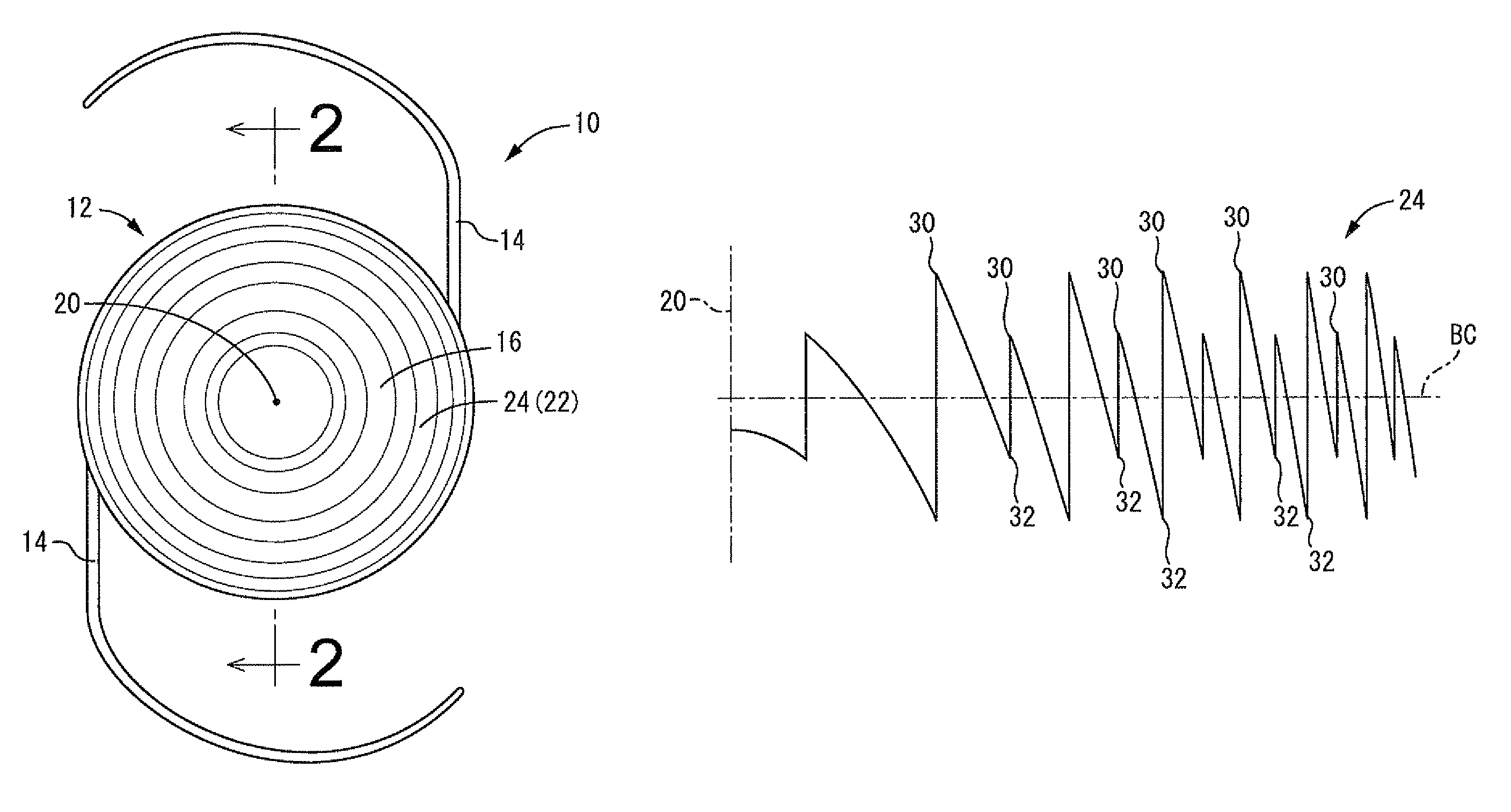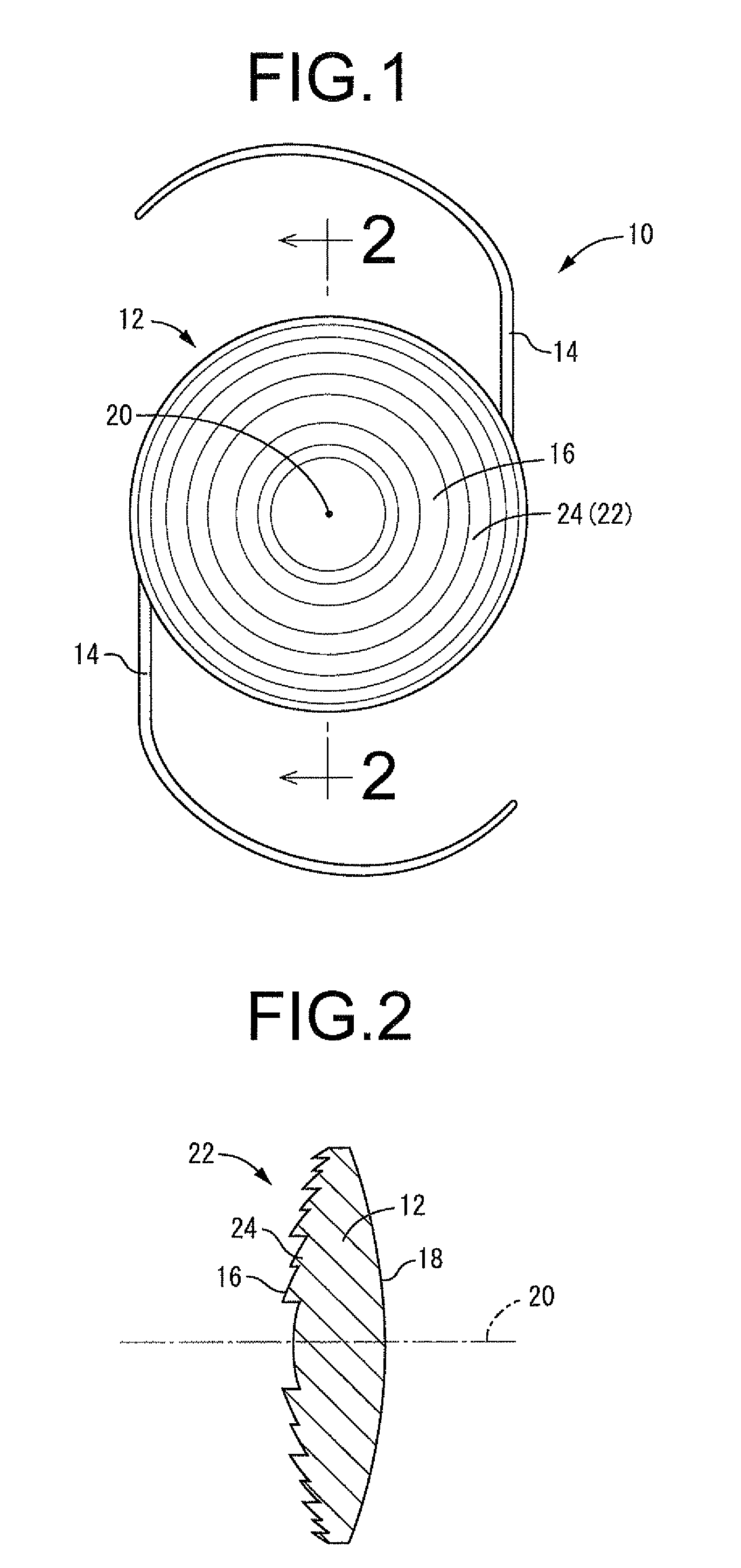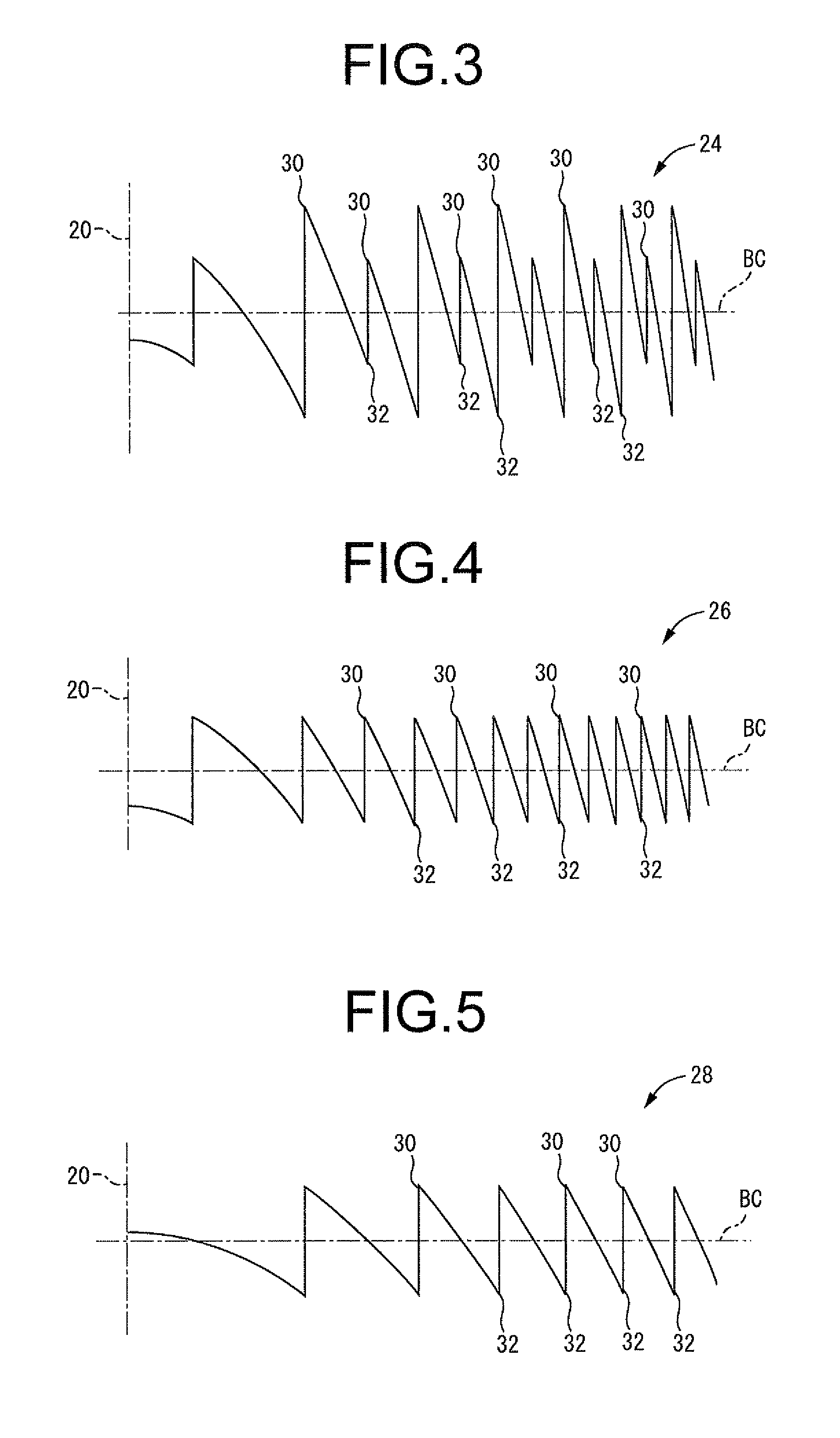Method for manufacturing aphakic intraocular lens
a manufacturing method and technology for intraocular lenses, applied in the field of methods, can solve the problems of insufficient improvement of vision, insufficient use of bifocal intraocular lenses that adopt a conventional diffractive lens structure, and inability to achieve effective vision, etc., to achieve secure the allocation of 0th order light and reduce the intensity of unnecessary nth order light such as the second order light
- Summary
- Abstract
- Description
- Claims
- Application Information
AI Technical Summary
Benefits of technology
Problems solved by technology
Method used
Image
Examples
first embodiment
[0096]First of all, FIG. 1 shows a front view diagram of an intraocular lens 10 as a first embodiment related to the aphakic intraocular lens in this invention, and FIG. 2 shows a cross-section diagram of an optical part 12 of said intraocular lens 10 described later. Here in FIGS. 1 and 2, a relief pattern 24 described later is shown with its size exaggerated for better understanding.
[0097]The intraocular lens 10 comprises the optical part 12 that is part of the lens main body and gives optical properties of the intraocular lens 10 and a pair of haptics 14 that extend out from the optical part 12. The optical part 12 comprises an optical front surface 16 in an approximate convex shape of a sphere as a whole, and an optical rear surface 18 in also an approximate convex shape of a sphere as a whole. And, the optical part 12 is, in its entirety, in an approximate shape of a disc with the thicker center, and is formed as a solid of revolution formed around a geometric lens center axis ...
second embodiment
[0147]First, FIG. 11 shows a relief profile of a relief pattern 50 as this invention. In the present embodiment, a synchronous structure where two reliefs with the dioptric power at +3.0D for near vision and the other at +1.0D for intermediate vision are periodically overlapped. By the way, the relief profile of the present embodiment is the one obtained under the following settings:
Radius of the base curve of the optical front surface 16=8.000 mm
Dioptric power of the optical part 12=+25.0D
Refractive index of the lens material=1.500
Refractive index of the surrounding medium=1.336
Designed wavelength=500 nm
Zone constant of the relief for near vision ‘a’=1
[0148]Meanwhile, the grating pitch is larger in the relief for intermediate vision than in the relief for near vision.
[0149]Especially in the present embodiment, two relief depths of the relief for near vision are provided per each zone of the relief for intermediate zone, and these three zones in total are formed, that is, in one out...
third embodiment
[0152]Next, FIG. 13 shows a relief profile of a relief pattern 60 as this invention. In the present embodiment, a synchronous structure where two reliefs with the dioptric power at +3.0D for near vision and at +1.0D for intermediate vision are periodically overlapped. Meanwhile, the grating pitch is larger in the relief for intermediate vision than in the relief for near vision.
[0153]In the present embodiment, two relief depths of the relief for near vision are provided per each zone of the relief for intermediate zone, and these three zones in total are formed, that is, in one out of three zone radii of the relief for near vision, the zone radius of the relief for intermediate vision is made equal to that of the relief for near vision. In each zone of the relief for intermediate vision composed of an overlap of reliefs for near vision, the height of the relief depth of the relief for near vision located between the relief depths of the relief for intermediate vision relative to the...
PUM
 Login to View More
Login to View More Abstract
Description
Claims
Application Information
 Login to View More
Login to View More - R&D
- Intellectual Property
- Life Sciences
- Materials
- Tech Scout
- Unparalleled Data Quality
- Higher Quality Content
- 60% Fewer Hallucinations
Browse by: Latest US Patents, China's latest patents, Technical Efficacy Thesaurus, Application Domain, Technology Topic, Popular Technical Reports.
© 2025 PatSnap. All rights reserved.Legal|Privacy policy|Modern Slavery Act Transparency Statement|Sitemap|About US| Contact US: help@patsnap.com



